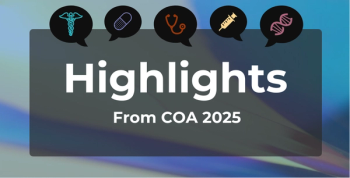
Opacity in Pharmaceutical Pricing
Pharmaceutical pricing is opaque for a reason and increased transparency may not be a benefit, said the speakers during the "Drug Pricing: Manufacturer, Payer, Prescriber, and Patient Perspectives" session at the Academy of Managed Care Pharmacy's 27th Annual Meeting & Expo in San Diego, April 7-10.
Pharmaceutical pricing is opaque for a reason, said the speakers during the “Drug Pricing: Manufacturer, Payer, Prescriber, and Patient Perspectives” session at the Academy of Managed Care Pharmacy’s 27th Annual Meeting & Expo in San Diego, April 7-10.
What drives the prices of drugs is not the cost of developing the product, but the number of competitors on the market, explained Jeffrey Moe, PhD, executive in residence and adjunct associate professor at the Fuqua School of Business at Duke University.
“Pricing in pharmaceutical is not cost plus,” he said. “It’s value-based pricing which is used in pharmaceuticals.”
Both he and the session’s other speaker, Howard Tag, JD, chief executive officer of Tag & Associates, Inc, agreed that increased transparency could actually be a bad thing. If one party has to reveal what it is willing to negotiate, it can actually bring prices up.
“The sad truth of the economic theory is that with more price transparency … it might defeat my willingness to give you a very low price as long as I know other parties with whom I’m negotiating don’t know I gave you that very low price,” Dr Moe explained.
Mr Tag spent the majority of his part of the session explaining various pricing sources. Between manufacturers, the government, private entities, and negotiations, there are 20 different prices to understand, monitor, and consider when changing payment policies, he said.
The benchmark prices being used are: average wholesale price, wholesale acquisition cost (WAC), average sales price (ASP), average manufacturer price, best prices, estimated acquisition cost, federal upper limit, and state maximum allowable cost.
The 2 that are most often used by Medicare, Medicaid, and private insurers are WAC and ASP, but there are problems with both, according to Mr Tag.
He ended his talk with the open ended question of what will happen when the first $1 million drug hits the market.
“There is by the way a million dollar drug that is ready for release in the EU,” he said. “And it will be coming to the United States in the not-too-distant future.”
Newsletter
Stay ahead of policy, cost, and value—subscribe to AJMC for expert insights at the intersection of clinical care and health economics.







































